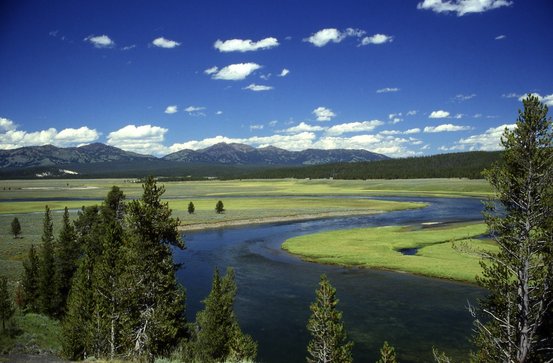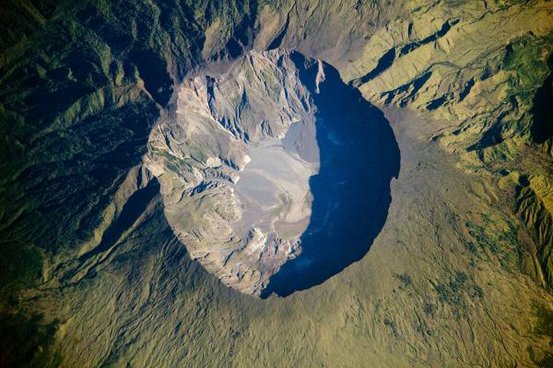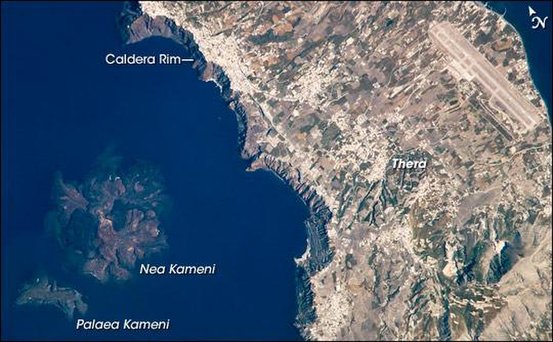Biggest Eruptions
In a volcanic eruption, lava, volcanic bombs and ash, and various gases are expelled from a volcanic vent or fissure. While many eruptions only pose dangers to the immediately surrounding area, Earth's largest eruptions can have a major regional or even global impact, with some affecting the climate and contributing to mass extinctions. Volcanic eruptions can generally be characterized as either explosive eruptions, sudden ejections of rock and ash, or effusive eruptions, relatively gentle outpourings of lava.
Yellowstone, 640K years ago (VEI 8)
The entire Yellowstone National Park is an active volcano rumbling beneath visitors' feet. And it has erupted with magnificent strength: Three magnitude-8 eruptions rocked the area as far back as 2.1 million years ago, again 1.2 million years ago and most recently 640,000 years ago. "Together, the three catastrophic eruptions expelled enough ash and lava to fill the Grand Canyon," according to the U.S. Geological Survey. In fact, scientists discovered a humongous blob of magma stored beneath Yellowstone, a blob that if released could fill the Grand Canyon 11 times over, the researchers reported on April 23, 2013, in the journal Science. The latest of the trio of supervolcano eruptions created the park's huge crater, measuring 30 by 45 miles across (48 by 72 kilometers).

Mt. Tambora, Sumbawa Island, Indonesia - 1815 VEI 7
The explosion of Mount Tambora is the largest ever recorded by humans, ranking a 7 (or "super-colossal") on the Volcanic Explosivity Index, the second-highest rating in the index. The volcano, which is still active, is one of the tallest peaks in the Indonesian archipelago. The eruption reached its peak in April 1815, when it exploded so loudly that it was heard on Sumatra Island, more than 1,200 miles (1,930 km) away. The death toll from the eruption was estimated at 71,000 people, and clouds of heavy ash descended on many far-away islands.

Mt. Thera, approx. 1610 B.C. (VEI 7)
Geologists think that the Aegean Islands volcano Thera exploded with the energy of several hundred atomic bombs in a fraction of a second. Though there are no written records of the eruption, geologists think it could be the strongest explosion ever witnessed. The island that hosted the volcano, Santorini (part of an archipelago of volcanic islands in Greece), had been home to members of the Minoan civilization, though there are some indications that the inhabitants of the island suspected the volcano was going to blow its top and evacuated. But though those residents might have escaped, there is cause to speculate that the volcano severely disrupted the culture, with tsunamis and temperature declines caused by the massive amounts of sulfur dioxide it spewed into the atmosphere that altered the climate.

Volcanoes 2018 ©